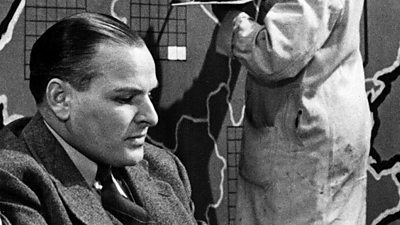Our staff and those who work with us undertake difficult and sometimes dangerous assignments. The Breathing sculpture on the Peel wing of Broadcasting House marks the invaluable contribution of those men and women who were murdered or lost their lives in acts of war while working on behalf of the ����ý and its audiences. Click on the names on the left to find out more.
Death waved them through the checkpoint.
They were lost.
All have their story here.
James Fenton
Breathing sculpture poem
The glass sculpture is etched with a spiral of continuous text by the sculptor Jaume Plensa, reflecting the voices we hear even in the silence:
life turns and turns on the crystal glass
breathing in our body
silence is a voice, our voice
silence is a body, our body
life turns and turns on the crystal glass
breathing in our body
I invite you to breathe
I invite you to listen to the silence
In addition, Breathing has a specific memorial poetry commission from the writer and ex-war correspondent, James Fenton.
James Fenton's Poem
We spoke, we chose to speak of war and strife –
a task a fine ambition sought –
and some might say, who shared our work, our life:
that praise was dearly bought.
Drivers, interpreters, these were our friends.
These we loved. These we were trusted by.
The shocked hand wipes the blood across the lens.
The lens looks to the sky.
Most died by mischance. Some seemed honour-bound
to take the lonely, peerless track
conceiving danger as a testing ground
to which they must go back
till the tongue fell silent and they crossed
beyond the realm of time and fear.
Death waved them through the checkpoint.
They were lost.
All have their story here.
James Fenton
James Fenton was born in Lincoln in 1949 and educated at Magdalen College, Oxford. He has worked as political journalist, war correspondent, foreign correspondent and columnist, drama critic and book reviewer. A collection of his pieces on major events in the Far East entitled All the Wrong Places was published in 1990. Other volumes of poetry include Terminal Moraine, The Memory of War and Children in Exile and Out of Danger.
Ahmad Shah
Ahmad Shah was killed on 30 April, 2018. He was working in Khost Province for ����ý News Afghan when the attack happened.
Ahmad Shah had been part of the ����ý for just over a year. He was a talented journalist and a popular and respected colleague. He was just 29 years old.
His death came on a dreadful day for journalism in Afghanistan, with nine journalists and photographers killed in bombings in Kabul.
‘It is a salutary reminder of the risks faced by journalists, including many of our staff, across the world every day’ said Fran Unsworth, Director of ����ý New.
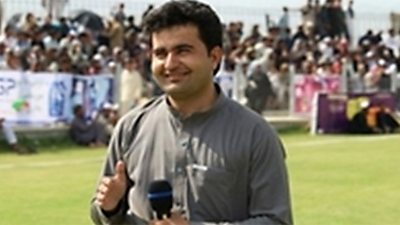
Mohammed Nazir
Mohammed Nazir was killed in a bomb attack in Kabul on 31 May, 2017.
He was driving journalist colleagues to work when the explosion happened. He was killed, andfour other ����ý staff were injured in the same attack and treated in hospital.
Mohammed had been part of the World Service team for four years. He was a popular member of the team - friendly, kind and hard-working.
‘His death is a reminder of the vital role that our ����ý crews play in helping us deliver news in highly dangerous and volatile environments’ said Fran Unsworth, Director of ����ý World Service.
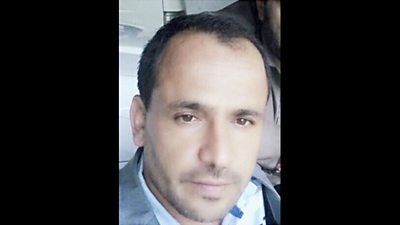
Ahmed Omed Khpulwak
Ahmed Omed Khpulwak was killed on 28 July, 2011 while working as a stringer for the Pashto Service.
He was in Tarin Kowt, the capital of Oruzgan province, Afghanistan, which had been under attack by suicide bombers for some hours. Just 25 years old, he had joined the ����ý three years earlier in 2008.
Ahmed also worked for the Pajwak Afghan news agency and was a presenter on local radio in Uruzgan.
Colleagues spoke of his death as a reminder once again of the extraordinary commitment made by all who report for the ����ý around the world.
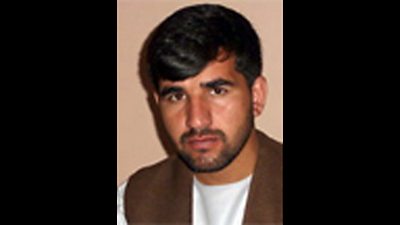
Nasteh Dahir Faraah
Nasteh Dahir Faraah, a reporter for the Somali Service, was shot dead by gunmen on 7 June, 2008 near his home in Kismayo, in southern Somalia.
Nasteh was just beginning his career as a journalist, following training with the ����ý World Service Trust. However, he already had a real passion for his chosen career as well as the desire to serve in a region where he knew the dangers he would face.
He filed his last report just an hour before he was killed. He was 24 years old and his wife was expecting their second child.
One of his trainers said of Nasteh: ‘He was a promising journalist who had become a well-known ����ý voice... a young broadcaster with great energy and considerable courage’.
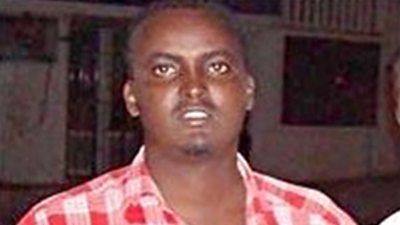
Abdul Samad Rohani
Abdul Samad Rohani served the ����ý’s Afghan and international audiences from Helmand, one of Afghanistan’s most dangerous provinces. On 7 June, 2008, he was abducted by unknown armed men and his body was found the next day. He was just 25 years old.
Colleagues who worked with him described him as a young and committed journalist, who never turned down a request for a live interview, even in the middle of the night. Rohani himself used to say that ‘a fish is fresh as long as it in the water’, meaning that he was most comfortable when he was out working in the field.
Helmand was Rohani’s home and he travelled far and wide across the province. It was this dedication which made him a household name across Afghanistan.
He also wrote poetry in Pashto – mostly about love – love for his wife, for his daughter, for his country. A colleague from the Pashto Service said of him: ‘In his poems, he longed for peace and abhorred violence. He was indeed a gentle man and a gentleman.’
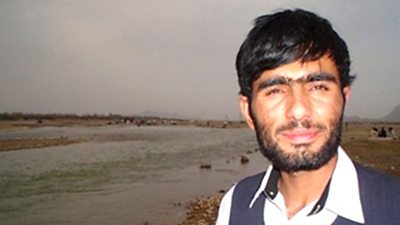
Kate Peyton
����ý producer Kate Peyton was shot dead in Somalia on 9 February, 2005.
She had gone to Mogadishu with reporter Peter Greste to cover talks on the return of the Somali government from exile in Kenya. As they were getting into their car after visiting the Sahafi Hotel to speak to officials, a shot rang out from a vehicle on the other side of the road. Kate was hit in the back. She was rushed to hospital for surgery but died later the same day.
Kate, 39, had worked for the ����ý as a producer since 1993 and was based in Johannesburg at the time of her death. Former Africa Correspondent Jane Standley described her as a 'ray of sunshine who had loved Africa with all her heart’.
Colleagues and friends mourned the passing of a brave and resilient journalist, whose life was tragically cut short.
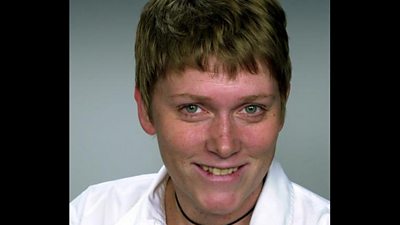
Simon Cumbers
Cameraman and journalist Simon Cumbers, 36, was killed in the Saudi capital, Riyadh, on 6 June, 2004. The ����ý's Security Correspondent, Frank Gardner, was seriously injured in the same attack.
The two men had gone with a Saudi government minder to the al-Suwaydi district of Riyadh – near to the home of an al-Qaida militant killed the previous year. As they were filming, three vehicles drew up and a number of gunmen got out and opened fire.
The ����ý's Correspondent, Orla Guerin, said that in a demanding industry, with the pressure of deadlines and danger, Simon had endless reservoirs of patience and good humour. 'It was Hemingway who said the definition of courage was grace under pressure; Simon was courage personified'.

Manik Saha
Manik Saha was killed in a bomb attack outside the Press Club in the south-western port city of Khulna on 15 January, 2004.
The home-made bomb was thrown at him by a member of an outlawed Communist group active in the south-western region of Bangladesh. It hit him on the head, causing severe injuries, and Saha died on the spot.
At the time of his death Saha was a nationally-renowned journalist – rare for a journalist who’d never worked in the capital Dhaka. Saha contributed regularly to ����ý Bengali output for nearly a decade, covering some highly sensitive areas such as Communist violence, disputes over shrimp cultivation and violation of human rights.
Saha’s death was a sad reminder to friends and colleagues that every day ����ý journalists around the world are exposed to intense physical threats and danger. They still carry on with habitual resilience, fortitude and skill.
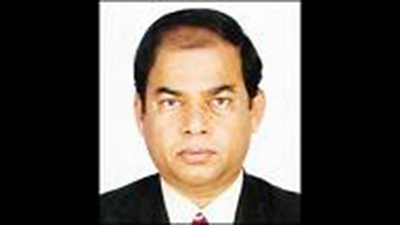
Kamaran Abdurazaq Muhamed
Kamaran Abdurazaq Muhamed, 25, was fatally wounded on 6 April, 2003 in Northern Iraq.
A US F-15 warplane mistakenly dropped a bomb on a convoy of US special forces and Kurdish civilians. ����ý correspondent John Simpson, cameraman Fred Scott and other members of the ����ý team accompanying the convoy were also injured.
Kamaran had been taken on by the ����ý as a translator at the beginning of the Iraq conflict. Of his murder, John Simpson said it was 'an absolute tragedy', and he described Kamaran as a 'charming, brave and resourceful character'.
Kaveh Golestan
Cameraman Kaveh Golestan, 53, was killed in a landmine blast in Northern Iraq on 2 April, 2003. ����ý producer Stuart Hughes was badly injured in the same incident.
Kaveh had worked for the ����ý in a freelance capacity before becoming the ����ý's bureau cameraman in Tehran, Iran in 1999. He was a Pulitzer Prize-winning photographer who had worked for many Western news organisations. He won particular acclaim for his work during the Iranian revolution and the Iraqi gas attacks on Kurdish villages.
����ý correspondent Jim Muir, who was with Kaveh in Northern Iraq, said: 'His energy, artistry, sensitivity and mischievous humour were only part of a complex, charming and gentle character who engaged all he met'.
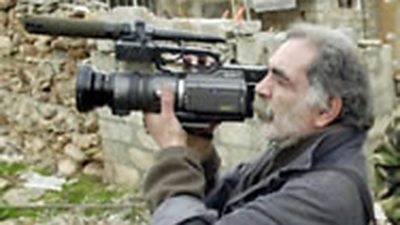
Abed Takoush
Abed Takoush, 53, was killed on 24 May, 2000 while covering the Israeli exit from Southern Lebanon. An Israeli tank shell was fired at his parked car on the Lebanese side of the border.
Abed had worked as a driver and producer with ����ý teams for 25 years.
Jeremy Bowen, who was then Middle East Correspondent, had just left the car and witnessed the attack from a short distance away. He described Abed as ‘A tower of strength to the crews working in the region. He knew where to go, who to talk to, where we could cover the war without getting swept up in it. Abed loved his work, he loved the scent of a story, he loved news and in the end he died for it'.
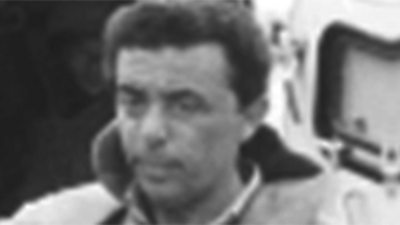
Mayilvaganam Nimalarajan
Mayilvaganam Nimalarajan, 38, the ����ý's Sinhala Service stringer in Jaffna, northern Sri Lanka, was killed on 19 October, 2000 in a grenade and gun attack on his home. The attack was witnessed by his parents and family.
He was the only independent journalist reporting from war-torn Jaffna, and was well known for his coverage of the separatist war in Sri Lanka and the bitter in-fighting between Tamil political parties in government-controlled areas of the peninsula.
Priyath Liyanage, head of the ����ý's Sinhala Service, said: 'I once asked Nimal to be careful because he had many threats from the warring parties. His reply was, "Who would tell the story of what is happening to my people if I didn't?”. True enough; since he died we are still trying to find a journalist who is brave enough to replace him.’
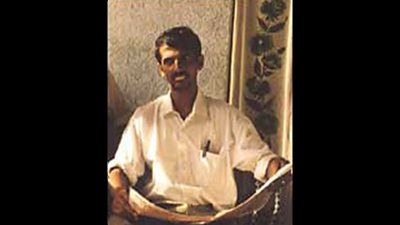
Shamsur Rahman
Shamsur Rahman was shot dead outside his home in Jessore in the extreme south-west of Bangladesh on 16 July, 2000.
Rahman, a regular contributor to the ����ý Bengali service, reported extensively on violence by outlawed Communist groups and local Islamist forces, and many believed he had been marked for death by both groups.
His death was a poignant reminder to colleagues and friends that the ����ý’s network of regular contributors and correspondents around the world is its lifeblood, and that we all owe a huge debt of thanks to fearless reporters such as Shamsur Rahman.
Mustaq Ali
Mustaq Ali, a 27 year-old freelance cameraman in Kashmir, was fatally wounded when a parcel bomb exploded in the ����ý office in Srinagar.
He took the full force of the explosion, which also injured the ����ý correspondent, Yusef Jameel, and a photographer. The parcel had been delivered a short time earlier by a woman wearing a burqua.
This attack, on 7 September, 1995 was seen as evidence of the intense pressures on journalists covering the Muslim uprising in Kashmir - from rival separatist groups, the Indian government and security forces. Fellow journalists in the Kashmir Valley went on strike for three days in protest at the killing.
Day in, day out, ����ý journalists are exposed to danger. Colleagues spoke of their admiration for men such as Mustaq Ali who carry on with such fortitude, skill and resilience in the face of this. We will never forget their fierce and impressive commitment.
John Schofield
����ý reporter John Schofield, 29, was shot dead by Croatian soldiers on 9 August, 1995.
He had been travelling with colleagues from Karlovac to Bihac in Bosnia. They had left their armoured vehicle to film burning villages when Croatian soldiers opened fire. John died instantly when he was hit by a single bullet. He had gone to the region to report for the ����ý radio programme The World Tonight.
Presenter Robin Lustig described him as ‘The kind of man who gives journalism a good name. He had immense energy, coupled with a scrupulous regard for the facts and an unshakeable belief in fair dealing.'
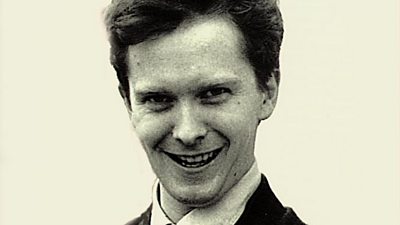
Mohyeddin Alempour
Mohyeddin Alempour, the ����ý's chief stringer in the central Asian republic of Tajikistan, was found dead on December 12, 1995.
His death had all the hallmarks of a political murder: none of his belongings had been stolen but he had been killed with a single shot to the head.
Mohyeddin, 50, was one of a number of journalists killed during the country's five-year civil war, most by paramilitary forces. He was a writer, photographer and broadcaster who had reported for the Persian Service for five years.
David Morton, the ����ý's Head of Region for the former Soviet Union, described Mohyeddin as ‘a well-loved and respected national figure who had made an outstanding contribution to the Persian Service’.
Mirwais Jalil
Mirwais Jalil, a stringer in Afghanistan for the ����ý's Pashto and Persian services, was murdered on 29 July, 1994.
He had gone with an Italian journalist to interview the then-prime minister, GulbuddinHekmatyar, at his base south of Kabul. On their return journey, five masked men stopped the taxi in which they were travelling and Mirwais, 25, was abducted at gunpoint. His body was found the following morning. He had been shot and stabbed at least 20 times in the chest and head.
����ý correspondent William Reeve said of him: ‘As an Afghan, Mirwais had been under extra pressure because almost everybody in the country listened to the Pashto and Persian services. He had been threatened many times but had bravely continued his work as a journalist, fixer and tireless translator for the ����ý’.
Tihomir 'Tuna' Tunukovic
Croatian freelance cameraman Tihomir 'Tuna' Tunukovic was killed on 1 November, 1992 when a mortar bomb exploded in front of the ����ý armoured vehicle that he was driving in central Bosnia. It caused the vehicle – the first of two in a convoy – to swerve off the road and down a ravine.
The second vehicle, carrying a Sky News team, came under fire and was forced to continue without stopping. The team later returned to the scene on foot to discover that Tihomir, 25, was dead. The vehicle had been holed by shrapnel.
����ý correspondent Allan Little, said 'Tuna came to the ����ý when his own country was being torn apart by war. Many of the most striking and most powerful images of the conflict came from his camera. He hated the war, and wanted it to be over, but threw himself into documenting it, believing in the need to bear witness. In jest, we called him, Mr Valiant-For-Truth: he was brave, creative, generous. He was also gregarious, charming and funny, bursting with ideas and ambition, on the very brink of what would have been a brilliant career as a documentary film-maker'.
Nick Della Casa, Rosanna Della Casa and Charles Maxwell
In 1991, freelance cameraman Nick Della Casa, his wife, Rosanna, and his brother-in-law, Charles Maxwell, were killed in a remote area of Northern Iraq. They had set off from Turkey in late March to cover Kurdish resistance to Saddam Hussein at the end of the first Gulf War.
Nick Della Casa, a freelancer for the Frontline News Television Agency, had earlier stayed in Baghdad during the bombing of the Iraqi capital and had provided dramatic pictures of the Allied attacks.
It appears that while trying to cross the mountains into Kurdistan, the group were murdered by a Turkish guide in a dispute over his fee. A detachment of Royal Marines found the bodies of the two men on 23 May. Rosanna Della Casa's body was never recovered.
These were brave and intrepid men and women who were fearless in their pursuit of truthful journalism.
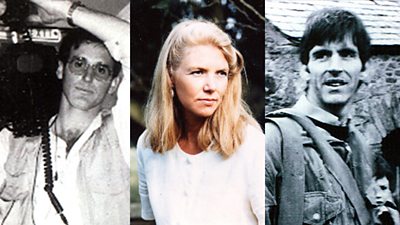
Georgi Ivanov Markov
Georgi Ivanov Markov, 49, a Bulgarian dissident who worked for the ����ý World Service as a journalist and broadcaster, was murdered in London on 7 September, 1978.
He was waiting at a bus stop in central London when he was jabbed in the leg by a man holding an umbrella. That evening he developed a high fever and he died in agony three days later. A post-mortem revealed that a tiny platinum pellet containing traces of the poison ricin had been embedded in his calf.
The Bulgarian Secret Service carried out the attack, with assistance from the KGB, in retaliation for Markov's broadcasts criticising the Communist regime of ZhivkovTodor.
‘We forget at our peril the courage and fortitude of so many of our World Service colleagues in the Cold War years. They carried on broadcasting to their homeland in the face of insidious and continuous danger, none more so than Georgi Markov’, said Robert Seatter, Head of ����ý History.

Ted Stoddart
Ted Stoddart, 34, a ����ý TV sound recordist, was killed by a landmine in Cyprus on 8 August, 1974. A convoy of media cars ran into a minefield on a road leading to Lapithos near Kyrenia. The ����ý TV team, who were at the front of the convoy, remained in their car but when others started to leave their vehicles, Ted Stoddart got out and shouted at them to go back. He stepped on a mine and was killed. ����ý reporters Simon Dring and Christopher Morris were also injured.
Paying tribute to Ted Stoddart's bravery, ����ý Director General Charles Curran said: "When a tragedy like this happens, everybody realizes the risks journalists have to take in covering the news, whether they are reporters known to the public or backroom boys like Ted Stoddart. Ted was a young man and a brave one, and we all mourn his passing."
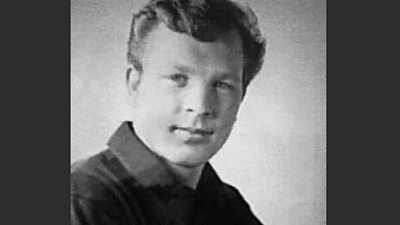
Bill Thomas
Bill Thomas, 35, was killed on 9 February, 1971 by an IRA landmine. Bill joined the ����ý in 1956 and worked at a number of locations before moving to Belfast in 1965 with his wife and two young daughters. He was in charge of the Transmitter Maintenance Team at Divis in Northern Ireland.
He had helped to restore transmissions from the Brougher Mountain transmitter after it was damaged in a bomb explosion in January 1971. He was returning to the site with his ����ý colleague Malcolm Henson and 3 contractors (see below) when he was killed. The men were travelling together in a ����ý Land Rover which drove into a trip wire attached to a landmine. It is believed the intended target was an Army patrol. The explosion killed all five men instantly.
Malcolm David Henson
Malcolm David Henson, 23, also died in the Brougher Mountain landmine incident. He had joined the ����ý two years earlier and had only recently been transferred from Crystal Palace to the Transmitter Maintenance Team. He was engaged to be married and is buried in Morecombe, Lancashire in a plot overlooking the Irish Sea.
The ����ý relies on key staff such as Bill Thomas and Malcolm David Henson, who perform a vital role in the technical realisation of broadcasting. We owe them a huge debt of thanks, as well as to the external teams that support them.
John Eakins, George Beck and Harry Edgar
We remember here the three construction workers who also died in this incident. They were: John Eakins, 52, married with seven young children; George Beck, 43, married with two children; and Harry Edgar, 26. All worked for McMullen and Sons, a Kilkeel-based firm which carried out maintenance and repairs on the ����ý's rural transmitter stations in Northern Ireland.
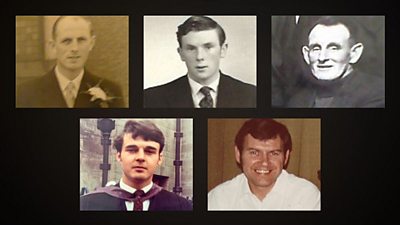
John Reginald Nixon
John Reginald Nixon, the ����ý's Middle East Correspondent, died when a civilian airliner en route from Beirut to Amman was shot down by an Israeli fighter near the Transjordan border on 23 September, 1948.
Nixon, 39, was a distinguished war correspondent and had risked death many times. On one occasion he was doing a live broadcast from Athens when there was a sharp crack and his voice disappeared. He came back a moment later to say a sniper on the roof opposite had just missed him.
He narrowly escaped being killed when a bomb exploded at the King David Hotel in Jerusalem in July, 1946, because he was late for an appointment and was still crossing the road outside. In a letter home, Nixon said he believed his luck could not hold out much longer. 'I have been in the firing line on sea, on land, and in the air for too many years now,' he wrote. 'I feel someone will get me in the end.'
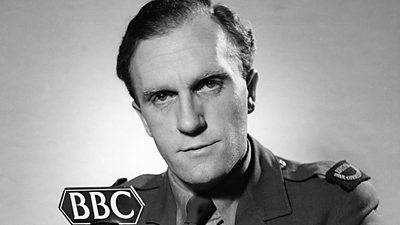
Guy Byam
On 3 February, 1945, ����ý war reporter Guy Byam was killed when a US bomber crashed after a daylight raid on Berlin. Byam, 26, was on board 'The Rose of York' (named after Princess Margaret), a US 8th Air Force Flying Fortress. The plane was damaged by anti-aircraft fire over Berlin and disappeared over the North Sea.
In the early years of the war Byam saw action with the Royal Naval Volunteer Reserve and Combined Operations but was wounded and invalided out. He joined the ����ý's War Reporting Unit in April, 1944. Two months later he parachuted into Normandy with British paratroopers on D-Day and his reports made him a household name.
A listener wrote after his death: 'All looked forward to hearing his enthusiastic and youthful voice in the 9 o'clock news.'
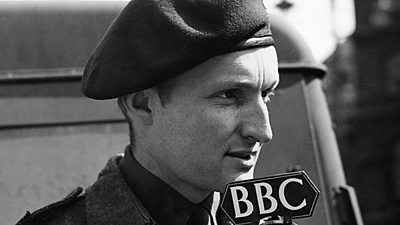
Kent Stevenson
����ý War Correspondent Kent Stevenson died while reporting on a raid over northwest Germany on 22 June, 1944. He was on board an RAF 49 Squadron Lancaster which was shot down by a German night-fighter.
Kent Stevenson had joined the ����ý in March, 1941 and transferred to the War Reporting Unit when it was established in 1943. Like his fellow correspondents, he underwent rigorous training in military survival techniques as well as in the art of reporting in the context of immediate warfare – often using the revolutionary new lightweight recording devices known as 'midget disc recorders.
‘Journalists such as Kent Stevenson were extraordinarily brave. They risked their lives through the intense years of World War II to fly the skies and bring the reality of warfare back to the Home Front’, said Robert Seatter, Head of ����ý History.
Other colleagues have lost their lives working with and for the ����ý on location around the world. They are remembered here.
Ahmad Yama Shirzad
Ahmad Yama Shirzad, a ����ý Afghan reporter, was killed in a traffic accident while driving from Kabul to his home in Kunduz on 31 October, 2016.
Ahmad joined the ����ý in 2006. He covered the turbulent Kunduz province and other north eastern areas for Pashto and Dari output. Ahmad leaves behind his wife, four daughters and two sons.
Meena Baktash, the Afghan Service Editor, said: ‘He was a well-known and highly respected journalist and often the only source from Kunduz for ����ý News. He was full of life and a close and sincere friend to all of us.’
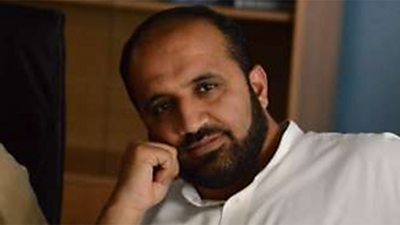
Tariq Jawad
On 22 September, 2015 Tariq Jawad, a driver for the ����ý Baghdad bureau, went into cardiac arrest. He died later that day in hospital at the age of 51 years old.
Tariq joined ����ý Baghdad in 2010. He was one of the best drivers, .working with every single Arabic correspondent/team ever to visit Baghdad. He also worked with many of our leading Newsgathering correspondentsincluding Ian Pannell, Nicola Careem, Quentin Summerville, Jim Mure and many others.
He was a great character and a loyal family man, and we shall miss him greatly.
Lola Almudevar
Lola Almudevar, 29, died in a road accident in Bolivia in 26 November, 2007. She was travelling from La Paz to cover political unrest in the city of Sucre.
Lola was an award-winning Video Journalist for the ����ý, who took a career break to travel in South America. Once there, she began writing for The Guardian and the San Francisco Chronicle as well as broadcasting for the ����ý’s From Our Own Correspondent strand.
All those who worked with Lola spoke of her huge energy and enthusiasm. She had a great love for story telling and a great love for Bolivia, coupling journalistic skills with a deep sense of humanity.
A friend paid this simple tribute: ‘The light that burns twice as bright burns half as long... and you have burned so very, very brightly.’
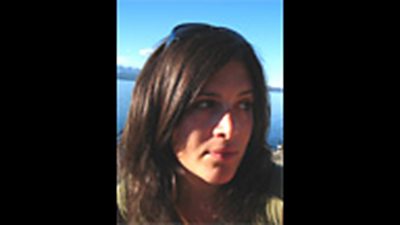
Peter Martini
����ý News producer Peter Martini, 31, died in a road accident in Russia on 10 July, 1996. He was travelling in a lorry carrying ����ý equipment back to the UK from Moscow following the Russian presidential elections. The collision happened on the main road between Novgorod and St Petersburg.
Peter had worked for the ����ý for just over a year. He had studied Russian and worked as a travel representative in Russia before becoming a journalist.
Foreign Editor Vin Ray said ‘Peter was a tireless and cheerful personality, with anabsolute passion for Russia. A skilled and dedicated producer, especially in difficult situations, he was someone whom everyone enjoyed working with. His death left a huge gap among his colleagues’.
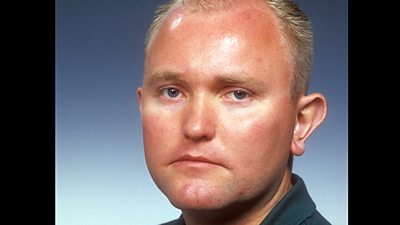
John Harrison
The ����ý's Southern Africa Correspondent, John Harrison, was killed in a car crash on 9 March, 1994 while working in Boputhatswana. He was on his way to a TV feed point when his car overturned at a local accident black-spot outside the capital, Mmabatho. John, 48, died from head injuries.
He had joined the ����ý in 1983 as a Westminster correspondent, having previously worked in newspapers. The former Labour Party leader Neil Kinnock, who was a friend of John's, said: 'His exuberance was unforgettable. He was a magnet for friendship, a communicable cure for gloom.'
Fergal Keane, a fellow ����ý correspondent in South Africa, described him in a poem written after John's death, as 'a ship of life, bound for the shores of promise'.
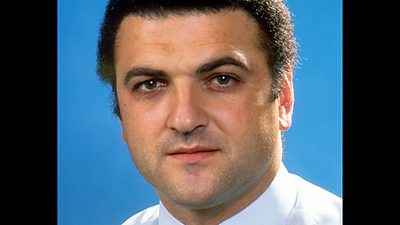
Mohamed Massoum died in a plane crash in Afghanistan on 27 April, 1993 while traveling to the northern town of Mazar I Sharif. He was on his way to report on celebrations to mark the one-year anniversary of the overthrow of the former Soviet-backed regime. Heavy rain was assumed to be the cause of the crash.
Mohamed was employed as a translator and producer in the ����ý bureau in Kabul. He also reported for the ����ý Persian Service.
John Mathai
John Mathai, a Kenyan video technician for Visnews, was killed while working with the ����ý in Addis Ababa, covering the overthrow of Ethiopia's Marxist regime. On 28 May 1991 he and his cameraman, Mohamed Amin, went with ����ý correspondent Michael Buerk to film a fire at an ammunition dump. When the dump exploded, John was killed and Mohamed was badly injured.
Michael Buerk later wrote: 'John Mathai was a graceful and gentle man, the last person who should have met such an ugly death.'
Chester Wilmot
Chester Wilmot, an eminent war correspondent, was killed when a BOAC Comet jetliner crashed over the Mediterranean on 10 January, 1954. He was returning from Sydney after taking part in the ����ý’s 1953 round-the-world Christmas broadcast.
Wilmot, 42, was an Australian journalist who had joined the ABC at the start of World War II. He reported from North Africa, the Middle East and the Pacific, before moving to the ����ý in May, 1944.
On D-Day he landed in France with the British 6th Airborne Division and covered many other major military operations in the final months of the war. He was also present at the German surrender in May 1945 and reported on the Nuremberg trials.
